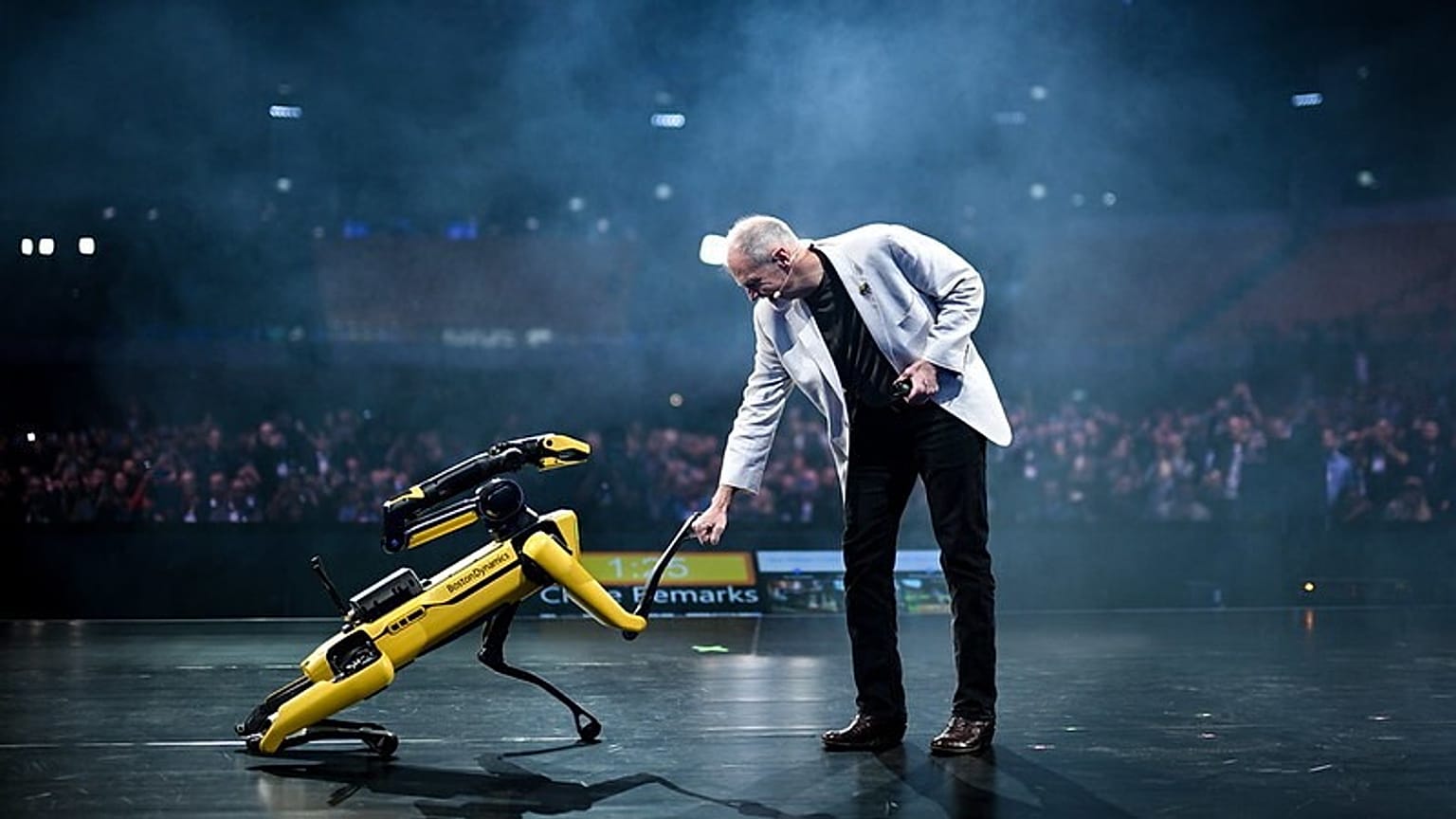Boston Dynamics CEO Robert Playter tells Euronews Next about robot safety, its newest model, and AI.
Artificial intelligence (AI) is changing the game of robotics – and it means we may see robots in our homes in the next five to 10 years, the chief executive of Boston Dynamics told Euronews Next at the Web Summit technology conference in Lisbon.
The American company, famous for its robot dog, showed off its latest robot called “Atlas,” which CEO Robert Playter said has “superhuman strength and a range of motion that allows for 360-degree rotations”.
For the moment, this robot is being developed to transport extremely heavy weights from one point in a factory to another. The company said it also hopes it will solve problems and have intelligence, without putting anyone at risk.
“In many respects, it is the most challenging robot we've ever built,” he said.
However, he said that despite the challenges in creating a dextrous and problem-solving robot, AI is making the job much easier.
Playter said AI has changed how robots are programmed. Before, engineers needed a deep understanding of the physics of a robot to keep it standing up. But now, robots can be trained in a simulation, rather than in the real world.
“We spent 20 years figuring out how to make walking really work, and now that's the easy step,” he said, adding that “the hard stuff is still ahead of us”.
The challenge now is the robot actually having dexterous manipulation and “being aware of its environment and so it can adjust its behaviours [and] really sense its safety”.
“There's still a huge amount of work to be done, but none of this could have been possible without AI. And so it's really an exciting time,” he added.
Safety is another key concern in robotics. Researchers recently concluded that AI-powered robots are not safe for general use. However, the study analysed AI chatbots and not physical industrial robots.
Industrial robots that perform unsafe jobs can make work environments safer – but only in high-tech and well-protected economies, another study found in February.
“We want to insist on safety standards so that robots, they're going to have to meet novel safety standards,” Playter said.
It would be unsafe, for example, to turn a robot off while it is walking up the stairs, he said. That’s a possible scenario under current safety regulations.
“We're going to have to rethink how we deal with safety” to ensure that “robots are really transparently easy to use,” he said.
Playter said this is vital as people will need to know how to control a robot, which he said is “important for safety, but it's also important to bring this technology so that everybody can benefit from it”.
“In the distant future, these are just going to be power tools that people use to amplify their own capabilities, so they've just got to be dead easy to use,” he added.
Asked when he predicts robots might come into our homes, he said he doesn’t think it will really happen until costs reduce significantly, safety improves, and the capabilities increase.
“That's honestly going to take five to 10 years,” he said. “It might not financially make sense just yet, but it'll be the beginning”.


















